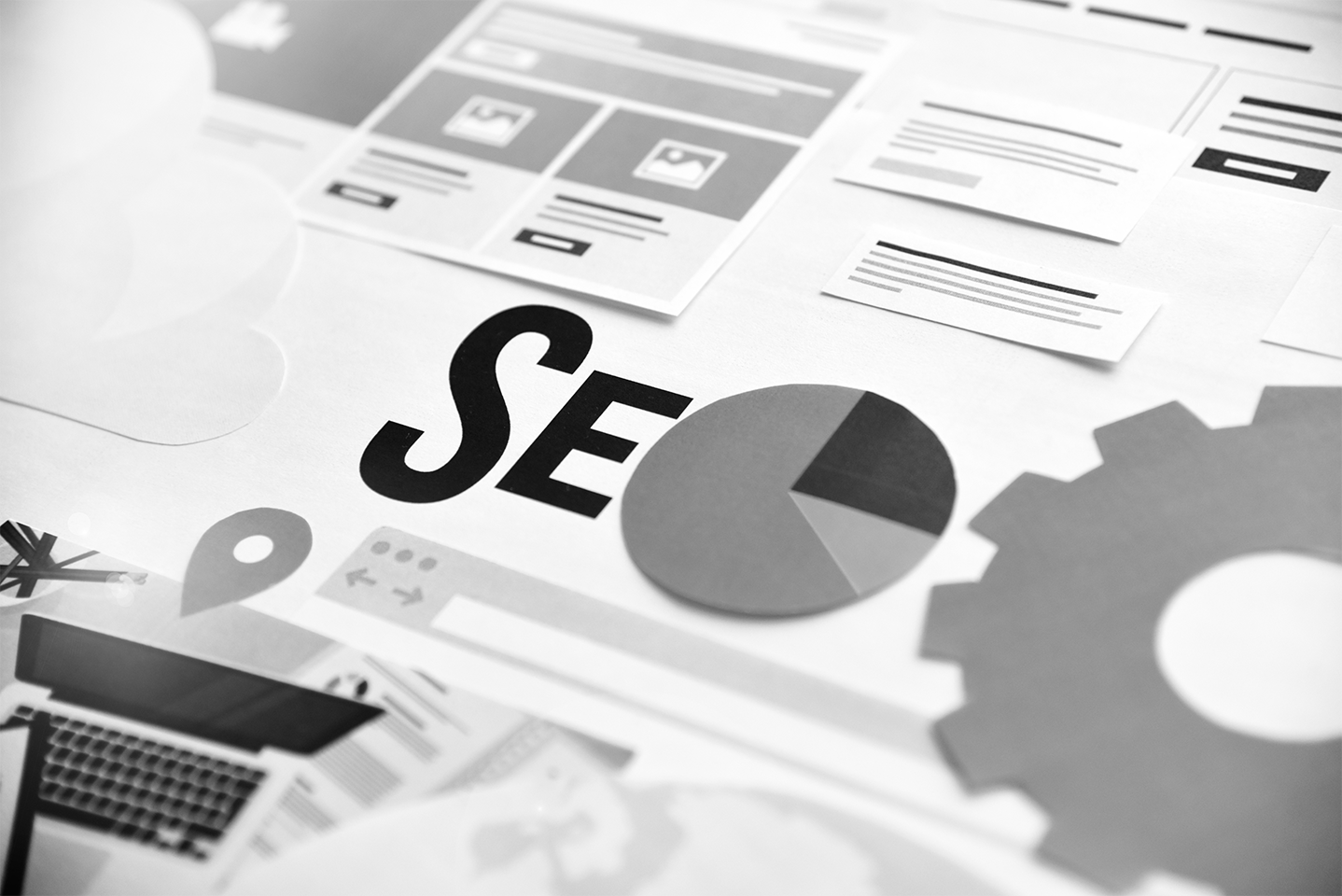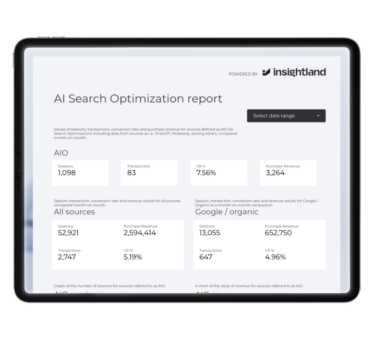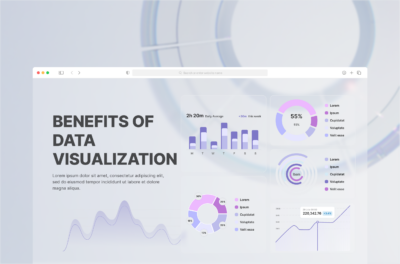Summary of 2021 in e-commerce and SEO – Irena Zobniów
2021 was an important year for e-commerce. It was dynamic and unpredictable. It forced the need for quick adaptation and changing the approach to doing business, putting the emphasis on different aspects. However, it also proved that the industry is ready for these challenges and gets better at understanding them. It has been growing, attracting […]

2021 was an important year for e-commerce. It was dynamic and unpredictable. It forced the need for quick adaptation and changing the approach to doing business, putting the emphasis on different aspects. However, it also proved that the industry is ready for these challenges and gets better at understanding them. It has been growing, attracting new customers, upgrading and gradually increasing its share of total sales. All this suggests a moderately optimistic outlook for the future.
It has also been an interesting year for us, full of challenges and growth. A year that strengthened our position not only in the Polish market, but also in Europe and the United States. A year that has shown that combining advanced analytical skills with SEO expertise and a holistic view of the business is the most effective way to support our e-commerce clients.
Irena Zobniow, SEO strategist & co-founder at Insightland recaps 2021. What has happened in the SEO world, how has e-commerce dealt with the pace of changes in the pandemic reality? What developments have had the strongest bearing on the industry? What tools and technological innovations have emerged in the market? And most importantly, what challenges will we face in 2022?
SEO and e-commerce seen through the eyes of a practitioner – read on to find out more.

What interesting developments has the industry seen in 2021?
I believe that the most important event in the SEO sector this past year was crossing the threshold of 50 thousand online stores operating in Poland. This almost symbolic and round number is important from the point of view of building organic traffic, as well as maintaining our performance. The arrival of new players on the market may mean an increase in budgets for SEO activities and even greater commitment to systematic analysis of competition and trends.
In terms of business, the entry of giants such as American Amazon or Swedish Klarna into Poland was certainly a significant factor. The Polish debut of Klarna, offering “Buy now, pay in 30 days” option, can be considered a game changer in the e-commerce sector. Of course, it is not a new payment model, as such a service has already been introduced on Allegro’s marketplace. Klarna payments, on the other hand, are available from a fintech app for purchases in virtually every online store in Poland. Popularization of BNPL can translate, on the one hand, into increased sales volume and shopping cart value in e-stores, and on the other hand – have a positive effect on the store’s image and build trust among customers. The Polish e-commerce market has entered a phase of stable growth. It is not an extremely fast or spectacular growth, but even monthly data from the Central Statistical Office (GUS) confirm that e-commerce’s share of the whole Polish trade has been rising at a steady pace. The fact that despite the presence of many local entities with a really well-established position on the Polish market, it is still an attractive place for global players shows that a lot is still to happen here and that the real, fierce fight for the consumer is still ahead of us.
Key trends of 2021.
One of the notable trends in 2021 was the marked expansion of domestic e-commerce businesses and the promotion of Polish brands. As consumers, we are increasingly interested in buying local products, thus supporting Polish entrepreneurs. This is illustrated by the growing popularity of such queries “Polish online stores” in Google. In 2020, it was searched 30 times per month on average, while in 2021 the average monthly number of searches ranged between 100 and 200 (data obtained with KWfinder).
The number of stores offering online shopping with in-store pickup also increased in 2021. During the lockdown, such solutions were offered by large home improvement retail chains which, in order to meet their customers’ needs, enabled them to pick up the purchased goods at a given store without the need to wait for their outlets to open. In the past year, many grocery stores, even small ones operating in local communities, used this solution. They can offer and sell their products online, and the customer can then pick them up at the store. Not only does this reduce the risk of contact with a potentially infected person, but also significantly reduces shopping time and increases comfort. It appears that the trend toward investing in online sales, even among smaller, local vendors, will increase in importance in the coming year which, for e-commerce consumers, translates to even more opportunities to shop in a quick, convenient and safe manner.
What has the pandemic changed in the SEO landscape in 2021?
Changes in consumer needs and habits, on the one hand, and the increased number of new online stores, on the other, have created certain challenges. For many e-retailers, this entailed a review of their sales strategies, taking into account the fact that customers were more cautious about spending money on products that were not associated with satisfying their essential needs or maintaining their standard of living. At the same time, they were more likely to buy everyday household goods, but also to invest in home entertainment in case of another lockdown. Many owners of online fashion stores have decided to expand their product range to include so-called home categories, such as homewear, home & living, decoration or games and entertainment. This way, they were able to at least fill the sales gap resulting from reduced popularity of clothing and footwear products. In turn, along with the arrival of new players on the e-commerce market, the competition and fight for customers has intensified, forcing store owners to invest more in search engine activities – both focused on SEO and paid campaigns.

Three words I will associate with 2021 in the e-commerce world.
Google algorithm updates – 2021, like no other year so far, was packed with a huge number of updates to Google’s search engine. This engine is what promotion in e-commerce is based on. The updates caused quite a stir, both among online retailers and SEO professionals. This is because not only did it mean major changes in page rankings, but also the need for much more involvement from SEO service providers. They had to react to the updates almost on the fly, making adjustments to their websites – not only product pages, but also strictly sales pages. The instability of key phrase positions resulting from these updates had a significant impact on organic traffic. This, in turn, affected the implementation of SEO strategies by e-commerce businesses. On the one hand, this created the temptation to react quickly to possible position drops and to change the approach to current activities. On the other hand, it confirmed that in most cases it was better to just wait until the fluctuations calm down, rather than change the strategy too hastily. Altogether, this had a huge impact on the execution of sales plans by e-commerce retailers, especially from free traffic, if they were based on the seasonality of a particular category. The effects of even a single update could have a major impact on reaching the projected sales target.
HOT or NOT? Successes and disappointments in 2021
HOT: Allegro’s introduction of deferred payment options. This solution will offer a great convenience for many users of this largest marketplace in Poland. The option to pay after receiving and checking the products is gaining popularity in e-commerce because, among other things, it increases the sense of security among shoppers. With Allegro, the accompanying factor is the scale and a huge, almost limitless range of products that can be purchased by consumers with the “buy now and pay later” option.
Disappointment: Amazon Prime’s offerings. It seemed that their terms would be much more competitive. Meanwhile, financially, or cost-wise, this service is very similar to Allegro Smart. So, it’s hard to talk about a noticeable competitive advantage for Amazon that customers were hoping for. Offering access to Amazon’s streaming platforms at the price of the service may be an important factor for some of the users when making their decisions. However, from the market perspective – it was not a game changer, and Amazon, in its efforts to win customers, will have to focus on the product range – offering products that are not available on Allegro or the same products, but at more attractive prices.
SEO industry events worth attending.
Without a doubt, the most important industry event was the SEO Festival in Katowice, organized by Artur Strzelecki. The event is very popular not only among SEO specialists, but also among owners of websites or online stores who want to acquire knowledge and learn practical tips in the field of search engine optimization.
Another important SEO event was the semKRK conference organized by DevaGroup. During 12 lectures, the experts shared their expertise in SEO, SEM and analytics. Participation in both events is a great opportunity to exchange views with other attendees and speakers and to learn about interesting case studies from the industry.

WHAT DOES 2022 HAVE IN STORE FOR US
Top challenges facing the SEO industry in 2022
Google Desktop Page Experience Update
Google’s announced update is expected to be fully implemented by the end of February 2022. As a result of these changes, the user experience when interacting with a website on desktop devices will be one of the key ranking factors. For site owners, this will entail revising their websites and adapting them to the existing Google search engine requirements. From an SEO point of view, the challenge will be not only to conduct a detailed audit that takes into account such elements as page load speed, proper HTTPS implementation or any other aspects that affect user experience, but also to implement changes quickly enough to minimize the risk of possible loss of organic traffic.
The effect of boom in e-commerce
Another challenge facing those responsible for both SEO and SEM in 2022 is the increasing competitiveness among online stores. According to Business Insider, as many as 51,000 online stores were registered in Poland in mid-September, up nearly 14% from the end of 2020. Not only major brands but also smaller players compete for position in organic results and in paid ads. Therefore, 2022 will be a test for the effectiveness of the strategies adopted and a period of intensive efforts aimed at building quality, converting traffic.
Regular technical optimization of websites
The year 2021, or rather the number of Google updates we had to deal with, proved that regular, ongoing technical optimization is basically the only way to meet the changing requirements of the search engine and thus not only not lose the SEO results achieved, but also to consistently improve them. In 2022, we can expect further updates from Google, which will require a great deal of involvement not only from technical SEO specialists, but also from developers who will have to ensure the smooth and correct implementation of the proposed changes.
What will the e-commerce sector face in the coming year 2022?
Given the growth rate of the number of online stores in 2021, as well as disturbing economic trends related to inflation and rising product prices, it may be a challenge for the e-commerce industry to maintain its sales growth rate at a satisfactory level of profitability. This is even more so as these factors increase the unpredictability of consumer behavior. This task will be easier for store owners who have invested in SEO in previous months or even years, as the visibility of their products in top search engine positions will result in free traffic and thus increase the prospects of building the assumed sales volume. However, this will also depend on the pricing policy adapted to the customer’s financial capacity, as well as the attractiveness of the offering, which should meet the customer’s current needs. It can be expected that many customers will be more reluctant to make spontaneous purchases and will focus on investing in essential products for everyday life. In the case of luxury, non-essential goods, or those related to entertainment, we can expect lower growth in sales. To address this challenge, it is first worth conducting an in-depth analysis of the store’s customer behavior over the past year, based on both the number of visits from different channels and the quality of those visits, including abandoned shopping carts. By focusing on top converting categories while adjusting pricing to the new realities, we will be able to design an effective sales strategy.
Let’s conclude with some technology innovations relevant to the SEO industry that are definitely worth following in 2022
- Boostsite.com
The end of 2021 marked the launch of development of a tool called Boostsite.com, and its creators are promising major improvements in 2022. It is a tool for automatic SEO analysis that combines the functionality of several existing separate tools available on the market. Thanks to its functionalities, it allows to significantly accelerate the process of website optimization or even automate it in some cases. Hours of work previously spent by SEO specialists on creating, among other things, technical analyses, audits or content recommendations will be reduced to a minimum thanks to Boostsite.com. The functions already offered by the tool make working with the website much easier.
- New Page Experience report in Google Search Console
SEO professionals will appreciate this fact, given the importance of the various elements of the report for building visibility in Google. This is because the data contained in the report can be extremely helpful in optimizing pages for search engine algorithms, especially Core Web Vitals.
- Launch of Brave Search
The arrival of a new privacy-focused search engine on the market is certainly a fact worth noting. Brave Search has already replaced Google as the default search engine in the Brave browser, providing users with results based on an index created from scratch. The things that are supposed to set Brave apart from other popular search engines are the lack of tracking of user queries, searches or clicks, and the absence of ads (at least in the initial phase of the engine’s development). From an SEO standpoint, this could mean new challenges in understanding how these algorithms work and thus adapting websites to guidelines that may be different from those used by Google.


